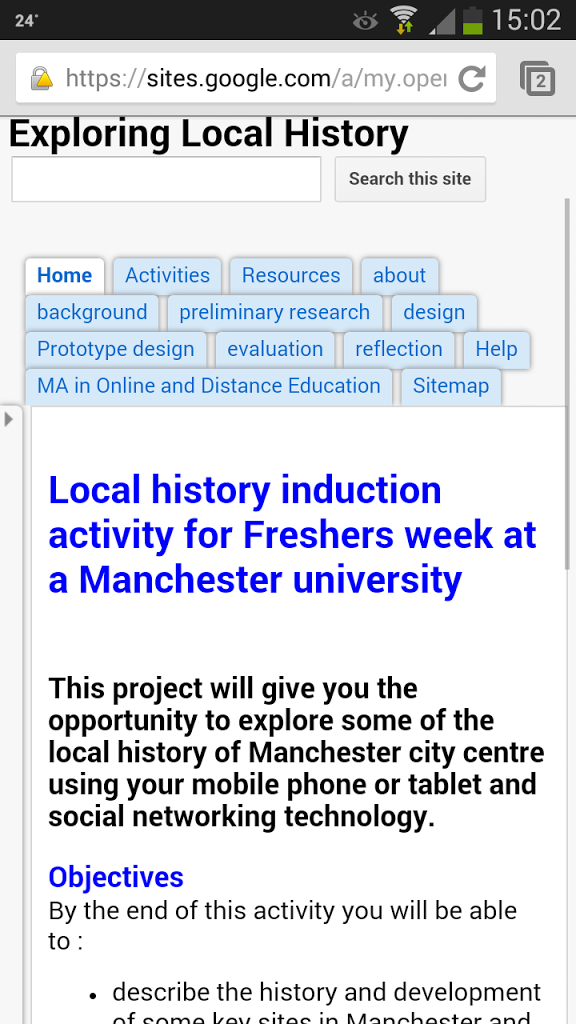The learning outcome for this week 4 of H817 was to be able to evaluate a learning innovation. It is now Thursday evening and I have learnt a lot but nothing to do with the intended outcome. However,I do want to get something out of this frustrating experience and the thing that occurs to me is that I would like to break down the activity and try to understand why this went so terribly wrong.
First of all, my own contribution was made too early, was completely wrong and I’m afraid it sent the whole group off into different directions, each equally confusing. I tried to step back through the error and get us back on track but that didn’t work out. And this was the first lesson learnt about collaborative work and is associated to using a forum without editing capability:
Students need to be able to correct their own mistakes
The forum is organised as FIFO (first in first out), by default, this means that anyone starting to read will read from the top down. If they get at all distracted by, for example a link along the way, it is likely they won’t make it to the bottom, even if that is where the correction is. But also that correction might not be placed next to the message that contains the erroneous information.
To be fair, this is particularly a Moodle issue; the majority of other forum systems I have used have allowed the poster to correct and amend their own messages at any time. Moodle is set up on a university wide basis, so even if this module (or any other encouraging student collaboration) wanted something different, it is likely to be quite tricky to change.
But on a broader question, is a forum therefore a useful environment for collaborative work? I have found forums useful as a tutor in order to collaborate with other tutors, but this is because a problem or issue is worked on in one thread only. And this leads to the second lesson:
Breakdown the activity
Various of us tried to break this multi-step activity down; I did, but skipped a step and going backwards didn’t work. Others tried but instead of taking the original activity and starting from the top these attempts were also repeating the whole activity.
What might have worked would have been to break down the steps into different threads from the outset, perhaps drip-feeding them one by one as they became populated with material. The threads could have been something like:
- Context & Goal: As a group, you need to decide on the context and the goal you want the technology to support.
- Shortlist: suggest items for the management team’s technology shortlist.
- Choose a technology: Each (see following lesson for discussion about terminology used in describing an activity) member of the group should choose a technology from the shortlist from point (2) and post the reasons for their choice (to the tutor group forum) here.
- At the end of the thread, nominate a group member to collate the suggestions from point (3) in doodle.com.
- Reviews: Review all the suggested technologies and why they are being suggested.
- Voting: (post the link to the Doodle vote here) Then each member of the group should vote for their preferred technology in doodle.com.
One of the barriers to progression seemed to me to be the way that we also had to wait for contributions from students we didn’t know whether they were lurking, on holiday, just reading everything, too busy, working, lost, looking after family….. and so to the third lesson:
Avoid wording that slows down the process
In point 3 the module team used the word “each”. This assumes that every member of every tutor group is going to a) be active b) take part in a timely manner. It set up the activity for failure from the outset and when I realised what it was requiring I simply dropped out of the discussion. But I also felt that we were being asked to do things in an unnatural order which leads me to the fourth lesson:
Collaborative work needs careful design
If this activity had been designed in a way where one thing flowed naturally on to the next, we might have found it easier to manage and been successful:
- Context & Goal: As a group, you need to decide on the context and the goal you want the technology to support.
- Shortlist: suggest items for the management team’s technology shortlist.
- Include a review
- Include a reason for your suggestion linked to the context and goal from point 1.
- Voting:
- Nominate a group member to collate the suggestions from point (2) in doodle.com.
- (post the link to the Doodle vote here) Then each member of the group should vote for their preferred technology in doodle.com.
As I said, I have stopped working on this activity altogether, apart from the fact that the final selection the group has actually managed to make is one that I have already looked at in detail so feel no need to continue with it, I also have simply run out of time this week. The idea of collaborating on the 2nd part of the week’s activities, to produce a report, fills me with horror and so I will cut my losses and move on.
I feel as though I am letting my fellow students down, that I am letting my tutor down but I don’t feel that I am letting myself down.




